

Below you will find a range of exercise sheets that may help you on your road to recovery. Please contact us for advice on which of these exercises will suit you best if you have not already been recommended to do them by your practitioner. You can download these information sheets or print them. We regularly review our existing exercise sheets and add new ones if needed.
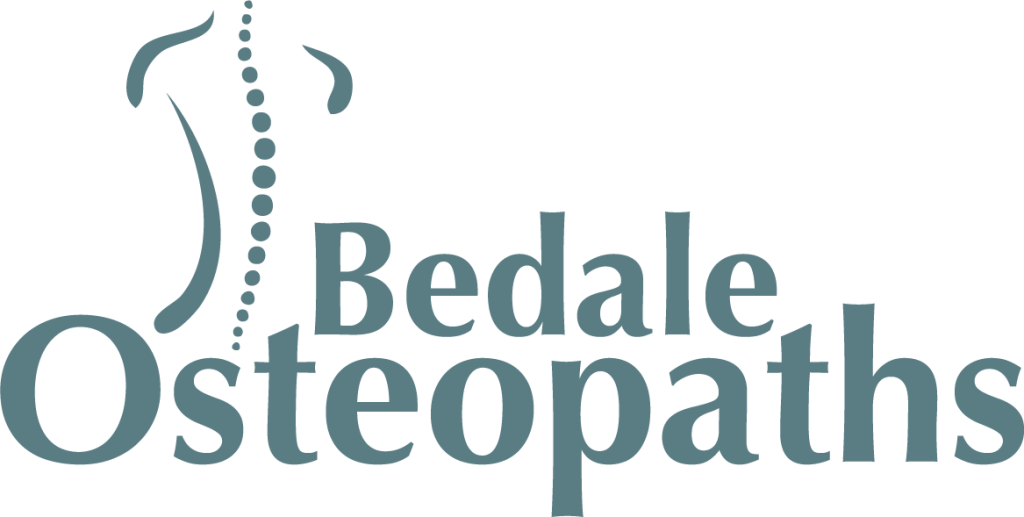
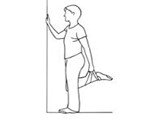
Hold for 20-30 seconds, 2-3 times on each side
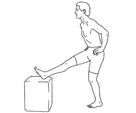
Hold for 20-30 seconds.
2-3 times each side (can use a small step).
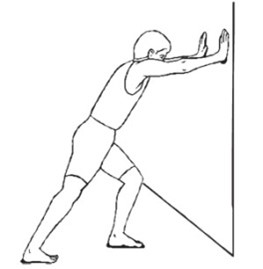
Stand with right foot back and leg straight keeping heel on the floor. Lean into the wall bending left knee until stretch is felt in right calf. Hold for 20-30 seconds, 2-3 times.
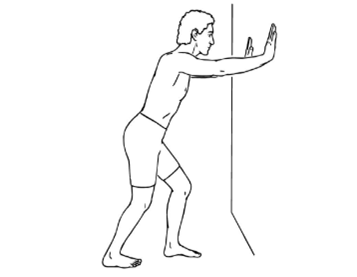
This time you will bend both knees keeping heels on the floor. Hold for 20-30 seconds, 2-3 times.

Keep your head up, bend your knee forward keeping your pelvis straight, you should not feel any pain in your low back.
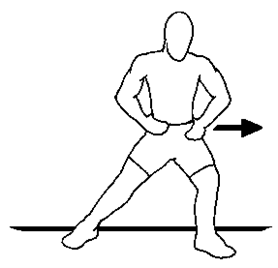
Stand with legs hip width apart. Lean left and hold for 20-30 seconds. Repeat on each side.
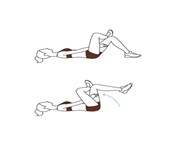
Lie on your back and place your right ankle on your left knee, lift your left leg up off the floor, you should feel the stretch in your right buttock. Hold for 20-30 seconds. Repeat on the other side.
These exercises should not be painful. If you are unsure of how to do them speak to your practitioner.
Tel: 01677 425858 www.bedaleosteopaths.co.uk [email protected]


Hold for 20-30 seconds, 2-3 times on each side

Hold for 20-30 seconds.
2-3 times each side (can use a small step).

Stand with right foot back and leg straight keeping heel on the floor. Lean into the wall bending left knee until stretch is felt in right calf. Hold for 20-30 seconds, 2-3 times.

This time you will bend both knees keeping heels on the floor. Hold for 20-30 seconds, 2-3 times.
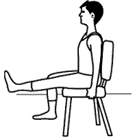
Gently raise foot and hold for 2-3 seconds. Repeat 10-20 times.
Variations: turn foot slightly in and repeat, turn foot slightly out and repeat
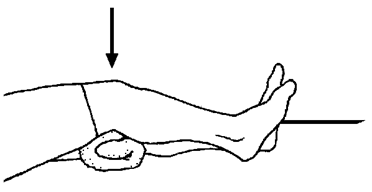
Cushion under the knee and push down into the cushion and hold for 3-5 seconds.
Repeat 10-20 times.
Stand against a wall with feet hip width apart. Pull up and in with your pelvic floor muscles. Gently slide down wall then return to start position. Repeat 10-15 times.
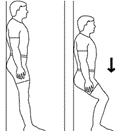
These exercises should not be painful. If you are unsure of how to do them speak to your practitioner.
Tel: 01677 425858 www.bedaleosteopaths.co.uk [email protected]

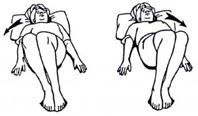
1. Gently and slowly rock your knees from side to side for 1-2 minutes. Keep the movements quite small. This exercise will help to limber up your low back

2a. Bring your knee towards your chest and hold for 10 seconds to feel the the stretch in your low back.
2b. Bring your left knee towards your right elbow hold for 10 seconds seconds seconds then change over.
2c. Bring both knees towards your chest and gently rock side to side to limber and massage your spine.
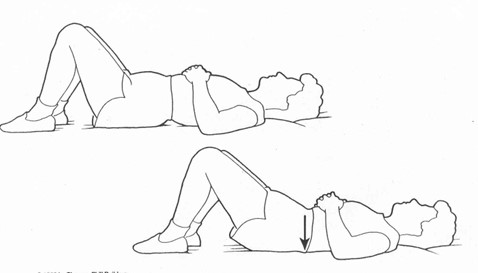
3. Pelvic Tilt: Lie on your back with your knees bent. Slowly push your back back down. You are trying to flatten out the curve in your lower spine. Repeat 6-10 times.

4. Adductor stretch. Drop both your knees outwards, feel the stretch in your inner thigh muscles, hold for 10 seconds.

5. Cross your left leg over your right and let the legs drift to the left side. Feel the stretch in the right outer thigh and low back.

6. Put your right ankle on your left knee. Bring your left knee towards your chest and feel the stretch into your right buttock. Hold for 5-10 seconds.
These exercises should not be painful. If you are unsure of how to do them speak to your practitioner.
Tel: 01677 425858 www.bedaleosteopaths.co.uk [email protected]

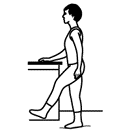
Take leg forwards, hold 2-3 seconds. Repeat 10-20 times.
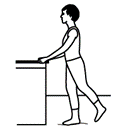
Take leg backwards, hold 2-3 seconds. Repeat 10-20 times.

Take leg out to the side, hold 2-3 seconds. Repeat 10-20 times.
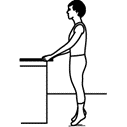
Raise up onto tip toes, repeat 10-20 times.

Gently raise foot and hold for 2-3 seconds. Repeat 10-20 times.
Variations: turn foot slightly in and repeat, turn foot slightly out and repeat.
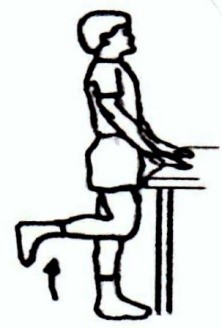
Bring your heel up towards your bottom hold for 2-3 seconds. Repeat 10-20 times.

Hold for 20-30 seconds. 2-3 times each side.

Hold for 20-30 seconds. 2-3 times each side (can use a small step).
These exercises should not be painful. If you are unsure of how to do them speak to your practitioner.
Tel: 01677 425858 www.bedaleosteopaths.co.uk [email protected]

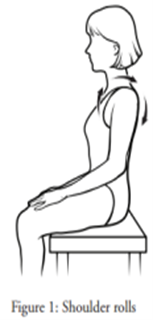
Hold for 20-30 seconds, 2-3 times on each side

Hold for 10-20 seconds on each.
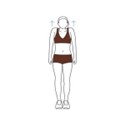
Shrug up for 2 seconds, down for 4 seconds, 5-10 reps.
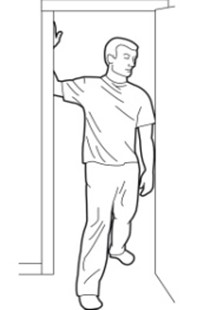
Feel the stretch at the front of the chest. You can increase the stretch by breathing deeply. 2-3 reps for 20 seconds.
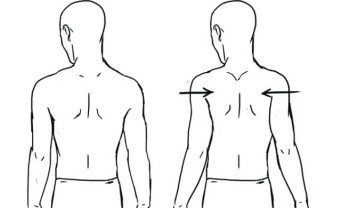
Hold for 4-5 seconds, repeat 10 times.

2-3 times hold for 20 seconds each time.

Only go as far as you feel comfortable. Feel the pull at the back of your arm, hold for 20 seconds.
These exercises should not be painful. If you are unsure of how to do them speak to your practitioner.
Tel: 01677 425858 www.bedaleosteopaths.co.uk [email protected]

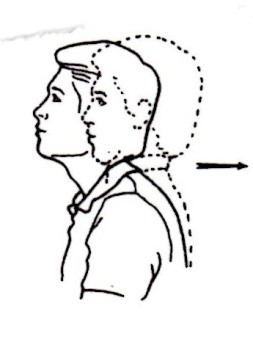
Tuck chin in, keeping eyes level. Hold for 2-3 seconds, repeat 10-15 times.

Circle the shoulders forwards 4-5 times then backwards. Do more backwards than forwards. Repeat 20 times. Keep them gentle and slow.

Hold for 4-5 seconds, repeat 10 times.

Hold for 10-20 seconds on each.

Feel the stretch at the front of the chest. You can increase the stretch by breathing deeply. 2-3 reps for 20 seconds.

2-3 times, hold for 20 seconds each time.
These exercises should not be painful. If you are unsure of how to do them speak to your practitioner.
Tel: 01677 425858 www.bedaleosteopaths.co.uk [email protected]


Wall Squats: Stand against a wall with feet hip width apart . Pull up and in with your pelvic floor muscles. Gently slide down wall then return to start position. Repeat 10-15 times.

Pelvic Tilt: Lie on your back with your knees bent. Slowly push your back down. You are trying to flatten out the curve in your lower spine. Repeat 6-10 times.

Bring your knee towards your chest and hold for 10 seconds to feel the stretch in your low back. Bring your left knee towards your right elbow hold for 10 seconds then change over. Bring both knees towards your chest and gently rock side to side to limber and massage your spine.
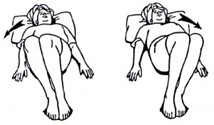
Gently and slowly rock your knees from side to side for 1 -2 minutes. Keep the movements quite small. This exercise will help to limber up your low back.

Breathe in, breathe out, engage pelvic floor, roll your hips and pelvis up off the floor, hold for 10 seconds and slowly lower, repeat 5-10 times.
These exercises should not be painful. If you are unsure of how to do them speak to your practitioner.
Tel: 01677 425858 www.bedaleosteopaths.co.uk [email protected]

The pelvic floor muscles are key to strengthening your back muscles. You can learn to ‘engage’ your pelvic floor muscles by pulling up and in with your underneath muscles or by gently pulling your low tummy area towards your spine. Lie with your knees bent and ‘engage’ your pelvic floor, on your out breath, hold the contraction for a few seconds and try breathing normally. Once you are happy that you know how to engage the pelvic floor muscles, practise contracting them to 100%, then to 50% then to 30%. Ideally do the following exercises with the pelvic floor engaged to about 30% of a full contraction.
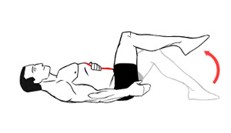
Single leg raise: Breathe in, breathe out, engage pelvic floor and then raise one leg, hold for 5 seconds, lower in a slow and controlled manner, repeat with the other side. You can progress to double leg raise: breathe in, breathe out, raise one leg, then the other and hold for 10 seconds, then slowly lower one leg at a time.

Breathe in, breathe out, engage pelvic floor, roll your hips and pelvis up off the floor, hold for 10 seconds and slowly lower, repeat 5-10 times.
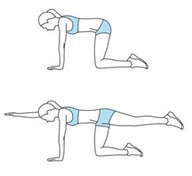
a) With your pelvic floor engaged, stretch out your arm and hold for 10 seconds, lower and repeat with the other arm and then with each leg 5-10 times. This exercise strengthens the back muscles and your co-ordination skills.
b) Raise opposite arm and leg at the same time.

Lie on your side with a straight back and the soles of your feet in line with your bottom, engage your pelvic floor. Keeping ankles together, raise the top knee 5-10cm towards ceiling, hold 5-10 seconds. Repeat 10 times.
These exercises should not be painful. If you are unsure of how to do them speak to your practitioner.
Tel: 01677 425858 www.bedaleosteopaths.co.uk [email protected]

Learning to breathe well can help to reduce your stress levels; it can lower heart rate, blood pressure and take you out of an anxious fear, fight, flight state into a more calm and relaxed state.
Whenever possible breathe through your nose!
Your nose acts as a filter; it can trap dirt, viruses and bacteria and prevent them from entering the lungs. It moistens and warms the air before it gets into your lungs. When we nasal breath we also form a gas called nitric oxide, which is fantastic for opening up our airways allowing 10-15% more oxygen into our lungs.
Take notice of your normal breathing pattern:
Get comfortable, lie down or sit for these exercises. If you are lying down have a pillow to support your head, for most people keeping your knees bent will be more comfortable. Shrug or roll your shoulders a few times to relax them before you begin.
Place one hand onto your upper chest and the other onto your tummy area, over your belly button.
Initially just notice your breathing, notice the speed of your breath, notice if your chest or your abdomen moves as you breathe in, notice how deep or shallow your breath feels. Remember how this feels and you can compare it to how you feel after the exercise below.
Breathing exercise for relaxation
When you are ready to begin, remain in the same position
Breathe in through your nose as if you are smelling a bunch of flowers.
Hold the breath for a few seconds
Breathe out through your mouth as if you are gently blowing a candle, you want to make the candle flicker but not blow it out. Long and slow, really empty your lungs.
WAIT until you feel you need another breath and when you do repeat.

Repeat this pattern for a couple of minutes.
Sometimes people can feel light headed or tingly when first doing breathing exercises. If this happens, pause the exercise, breathe normally and try wiggling your fingers and toes until the sensation passes. When you try again maybe shorten your breath a little.
Is your diaphragm working well?
Ideally you will find that the hand on your tummy rises when you breathe in. This is your diaphragm, the main breathing muscle working. If you find that your chest rises more than your stomach then try and focus on allowing your chest to relax and make your stomach rise or push out against your hand as your breathe in.
Tips: If you are lying down you can put a heavy book on your stomach and see if you can work your diaphragm by moving the book up as you fill your lungs with air. If you are sitting you could wrap a scarf around your lower ribs and hold it quite tightly, as you breathe in feel your ribs pushing against the scarf.
There are many different breathing exercises, the purpose of this one is really to relax you and slow and deepen your breathing.
Once this feels comfortable and easy you can try and make sure that your out breath is twice as long as your in breath. So if your natural deep breath in takes 2-3 seconds then when you breathe out try and make it last for 4-6 seconds. Try and practice this each day, several times a day.
If you are prone to panic attacks or hyperventilation then try and practice this breathing little and often when you are not feeling at your most anxious.
If you find this type of breathing uncomfortable or difficult speak to your practitioner, it may be that you need a different exercise to begin with. This advice sheet describes just one of many approaches to establishing a good breathing pattern.
Don’t give up. Learning to breathe well has enormous benefits for general health and well being.
These exercises should not be painful. If you are unsure of how to do them speak to your practitioner.
Tel: 01677 425858 www.bedaleosteopaths.co.uk [email protected]

Hyperventilation syndrome is a common disorder that can present with a wide range of symptoms. It is often linked with anxiety attacks or panic disorder.
Symptoms of Hyperventilation
Symptoms may be acute or chronic:
For the acute or first time sufferer symptoms may arise quite suddenly and can often be frightening. It is not uncommon for sufferers to seek help at the local accident and emergency department. It is here that many patients get their initial diagnosis of a panic or anxiety attack.
For the chronic Hyperventilator the symptoms of a breathing disorder may not be as obvious, but recurrent episodes of the above symptoms may begin to occur on a regular basis. Stressful situations may provoke an episode but equally symptoms are also common when the person slows down to relax or sleep.
What causes the symptoms?
Many of the symptoms described above are caused by over breathing. The average person needs to take 10-12 breaths per minute. We breathe in oxygen, our body cells use this oxygen and chemical processes occur which result in us breathing out carbon dioxide. Our brain constantly tries to balance the levels of oxygen and carbon dioxide we have in our blood. If we over breathe we can breathe out carbon dioxide too quickly.
Low carbon dioxide in the body is called hypocapnia and this can cause changes in the blood flow to the brain, which results in the feelings of dizziness, weakness or numbness, confusion or agitation or feeling faint. It can also cause muscle spasms and twitches. When these symptoms are felt, feelings of panic may arise and the urge is to increase our breathing further.
Normally our brain tells us to breathe slower before the carbon dioxide levels fall to the point where we would get symptoms. But sometimes a stressful event, feelings of anxiety, or pain may allow us to psychologically override the subconscious mind’s normal response and we continue to breathe too quickly, resulting in unpleasant symptoms.
This psychological response can eventually reset the brain’s perception of what is a “normal level” of carbon dioxide in the body to a new lower level.
Once this has happened, normal levels of carbon dioxide are regarded by the brain as high and prompt over breathing which, in due course, leads to hyperventilation symptoms. This is why, when we naturally slow down our breathing at night when we are relaxing or asleep, it may still provoke symptoms, even though we may not be feeling stressed or anxious. The altered breathing pattern has become a vicious circle.
What treatment can help these symptoms?
Tel: 01677 425858 www.bedaleosteopaths.co.uk [email protected]

The Vagus nerve – most of us will have heard of and, at some point, felt our body’s fear, flight, fight response. This is the feeling of heart pounding, a dry mouth, butterflies in your stomach or nausea, sweaty palms and thoughts racing. It is your body’s automatic physiological response to a threatening situation.
When we encounter stress we have a flood of adrenaline and cortisol, which will prime your body to respond quickly by bringing more oxygen to your muscles and increasing your heart and breathing rate, so that you can flee or fight. This is an example of the sympathetic nervous system working to protect you . It is not under conscious control. However, this same part of our nervous system has another side to it, the parasympathetic nervous system. This part is all about rest, relaxation and digestion; it slows our heart rate, lowers our blood pressure, allows us to digest and calms us after stress.
The Vagus nerve is a key part of this automatic regulatory system, making up 75 % of the parasympathetic nervous system. Our bodies need us to have a balance between the parasympathetic nervous system and the sympathetic nervous system but often, in today’s busy world, we are working far more in the fear, fight, flight state.
There are various ways you can try to work to ensure that your Vagus nerve is activated and doing its job. These can be used to de-stress and may help to reduce anxiety and pain levels.
Slowing your breathing and breathing from your belly
Aim to exhale for longer than you take to inhale.
Gargling
Aim for a minute or two
Humming or singing
An easy way of getting the Vagus nerve working is to hum. It can also help with breath regulation.
Cold water immersion
This could be splashing your face with cold water, or it may be building up to having a blast of cold water in your daily shower routine.
Meditation
Any mindfulness or meditation exercises can be used to increase Vagus nerve function.
The salamander exercise
You can lie or sit for this exercise, but it is more relaxing to start it by lying on your back, with your knees bent and a pillow behind your head. Clasp your hands behind your neck, place them at the base of your skull and relax back, looking up at the ceiling.
Without moving your head take your gaze to one side. Keep it comfortable, don’t strain your eyes but keep your gaze to that side until you feel the need to swallow/ sigh/ yawn or take a deep breath.
Once that happens you can return your gaze to centre, then repeat looking in the opposite direction.
When we sigh/yawn/swallow/deep breath it is a good sign that your nervous system is coming out of any fear, fight, flight state and your Vagus nerve is being activated, allowing your parasympathetic nervous system to take over. This is the relaxing part of your nervous system that is essential for rest, relaxation and digestion etc.
If you find you are there for a minute or two and do not have a sigh/yawn/swallow/deep breath then maybe try a deep breathing exercise instead.
Tel: 01677 425858 www.bedaleosteopaths.co.uk [email protected]
